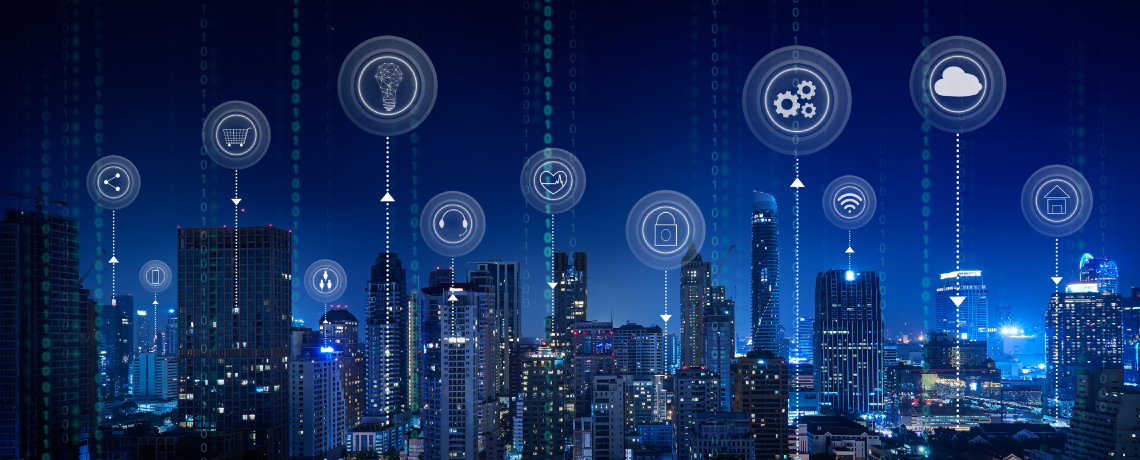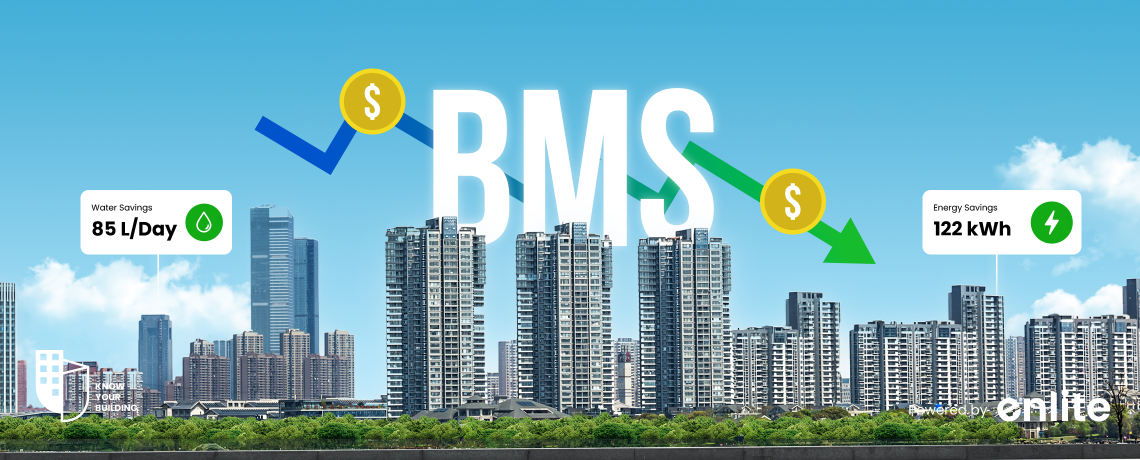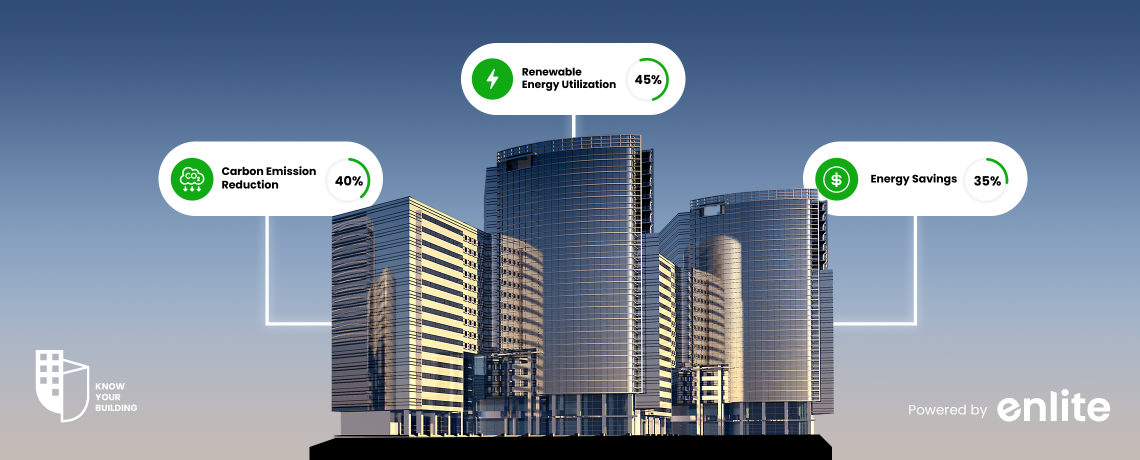Introduction
The world is undergoing a transformational shift towards urbanization, with more than half of its population now residing in cities. This rapid urban growth has led to increased demands for innovative solutions to address the challenges associated with urban living. One such groundbreaking solution is the integration of IoT powered Building Management Systems in urban infrastructure. In this article, we will delve into the significance of IoT powered Building Management Systems in shaping the future of urban living.
IoT powered Building Management Systems represent a sophisticated and interconnected approach to controlling and optimizing various building operations. These systems employ a network of interconnected devices, sensors, and software to manage and monitor crucial functions within a building. The primary aim of IoT powered BMS is to enhance the efficiency, safety, and sustainability of urban structures.
Urbanization is a dominant global trend, with more people moving to urban centres than ever before. This exponential increase in urban populations has triggered a cascade of challenges, including heightened energy consumption, security concerns, and the need for enhanced living standards. Consequently, urban planners and architects are exploring innovative solutions to tackle these issues.
Building Management Systems are at the forefront of this urban evolution. By integrating IoT technology into urban infrastructure, cities are becoming smarter, more efficient, and more sustainable. Let’s take a closer look at how IoT powered BMS is revolutionizing the way buildings function within these urban environments.
Smart Buildings: The Cornerstone of IoT
What Makes a Building “Smart”?
At the heart of the IoT revolution in urban living are smart buildings. But what exactly makes a building “smart”? Smart buildings leverage IoT technology to optimize their core systems. These systems include lighting, heating, ventilation, air conditioning (HVAC), security, and more. What sets them apart is their ability to adapt and respond to changing conditions in real-time.
IoT Integration in Smart Buildings
IoT powered BMS is the driving force behind the intelligence of smart buildings. These systems connect, monitor, and manage all building subsystems seamlessly. This integration enables real-time data collection, analysis, and decision-making, allowing buildings to operate efficiently while enhancing the comfort and security of occupants.
Benefits of IoT powered Building Management Systems
Energy Efficiency and Sustainability
One of the most significant advantages of IoT powered BMS is their contribution to energy efficiency and sustainability. These systems can dynamically adjust lighting, HVAC, and other building systems based on occupancy and environmental conditions. As a result, they reduce energy consumption, lower utility costs, and help reduce the carbon footprint of urban living.
Improved Security
Security is a paramount concern in urban environments. IoT powered BMS plays a crucial role in enhancing building security through integrated systems for access control, surveillance, and intrusion detection. Real-time monitoring and automated responses to potential threats ensure that urban dwellers feel safe and secure.
Enhanced Comfort and Convenience
IoT powered BMS go beyond mere energy savings and security enhancements; they also prioritize occupant comfort and convenience. By tailoring lighting, temperature, and other building parameters to individual preferences, smart buildings create more pleasant and customized living spaces.
IoT powered Building Management Systems are fundamentally reshaping urban living. These systems are the linchpin of smart buildings, offering numerous benefits, including enhanced energy efficiency, improved security, and superior comfort. As urbanization continues to accelerate, the adoption of IoT powered BMS in urban infrastructure becomes increasingly vital. By doing so, we are moving closer to the vision of smarter, more sustainable, and resilient cities that cater to the evolving needs of their inhabitants while minimizing their environmental impact. The journey towards this urban future has begun, and IoT powered BMS are at the forefront of this transformative wave.
IoT and Urban Sustainability
As cities around the world grapple with the challenges of rapid urbanization, IoT powered Building Management Systems (BMS) emerge as a powerful tool for promoting urban sustainability. These systems play a pivotal role in addressing critical issues related to environmental impact, resource utilization, and overall urban resilience.
Reducing Carbon Footprint
Urban areas are responsible for a significant portion of global carbon emissions. One of the key contributions of IoT powered BMS to urban sustainability is their ability to reduce the carbon footprint of buildings and, by extension, entire cities.
By integrating IoT powered BMS, buildings can actively manage and optimize energy consumption. Smart lighting systems adjust lighting levels based on occupancy and natural light, reducing electricity usage. HVAC systems are controlled intelligently, ensuring that heating and cooling are deployed only when necessary. These measures lead to substantial energy savings, a decrease in greenhouse gas emissions, and a more environmentally responsible urban landscape.
Resource Optimization
Urban sustainability isn’t limited to reducing energy consumption; it also encompasses the efficient use of various resources such as water, materials, and space. IoT powered BMS excel in optimizing these resources, contributing to a more sustainable urban environment.
Water management is a critical aspect of resource optimization. Smart buildings equipped with IoT powered BMS can monitor water usage in real-time and detect leaks promptly. This not only conserves water but also reduces the risk of property damage and associated repair costs.
IoT powered BMS can help optimize space utilization within urban structures. Through occupancy sensors and data analytics, buildings can allocate space more efficiently, reducing the need for additional construction and minimizing urban sprawl.
Real-world Applications
The real-world applications of IoT powered Building Management Systems in urban sustainability are diverse and impactful.
Smart Lighting Systems
Smart lighting is a standout application of IoT powered BMS. These systems automatically adjust lighting levels based on factors such as occupancy and natural light availability. As a result, they reduce electricity consumption, prolong the lifespan of lighting fixtures, and create more comfortable and energy-efficient urban spaces.
Predictive Maintenance
IoT powered BMS enable predictive maintenance for building equipment and systems. By continuously monitoring the health and performance of these assets, maintenance needs can be anticipated before a failure occurs. This not only minimizes downtime and repair costs but also extends the lifespan of equipment, reducing waste and resource consumption.
Indoor Air Quality Monitoring
Indoor air quality is a critical aspect of urban sustainability and occupant well-being. IoT powered BMS can monitor air quality in real-time and adjust HVAC systems accordingly to ensure a healthy indoor environment. This not only enhances the quality of life for urban dwellers but also contributes to energy efficiency by avoiding unnecessary ventilation.
In conclusion, IoT powered Building Management Systems are pivotal in promoting urban sustainability by reducing carbon footprints, optimizing resource utilization, and enhancing the efficiency of urban buildings. However, it’s essential to address challenges related to privacy, data security, initial costs, and infrastructure. As technology continues to evolve, it promises to play an increasingly significant role in creating smarter, more sustainable, and resilient urban environments. The integration of IoT powered BMS into urban development represents a crucial step towards a greener and more liveable future.
The Future of Urban Living
Urban Planning and IoT
The future of urban living is inextricably tied to the integration of Building Management Systems (BMS) and the Internet of Things (IoT) in urban planning. Urban planners are increasingly recognizing the potential of IoT powered BMS in creating smarter, more sustainable, and resilient cities.
In urban planning, IoT powered BMS can play a pivotal role in optimizing infrastructure. Data collected from buildings, such as energy usage patterns and occupancy trends, can inform decisions about where and how to expand city services. This data-driven approach allows cities to allocate resources efficiently, reduce waste, and enhance overall urban functionality.
IoT powered BMS can assist in disaster preparedness and response. By monitoring structural health and safety systems in real-time, cities can better prepare for emergencies and respond swiftly when disasters strike. This enhances urban resilience and ensures the safety of urban residents.
IoT-Driven Real Estate Developments
Real estate developers are increasingly incorporating IoT powered BMS into their projects, driving innovation in urban living. From residential apartments to commercial complexes, IoT powered BMS is transforming the way buildings are designed, constructed, and operated.
In residential real estate, IoT powered BMS enhances the quality of life for residents. Smart homes equipped with these systems provide advanced features such as personalized climate control, energy-efficient lighting, and remote access to security systems. This not only attracts buyers and tenants but also adds significant value to real estate properties.














